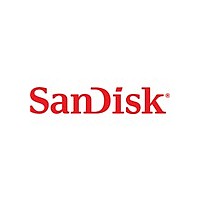FFD35-U3S-48-P80-P SanDisk, FFD35-U3S-48-P80-P Datasheet - Page 57

FFD35-U3S-48-P80-P
Manufacturer Part Number
FFD35-U3S-48-P80-P
Description
Manufacturer
SanDisk
Type
Flash Diskr
Datasheet
1.FFD35-U3S-48-P80-P.pdf
(70 pages)
Specifications of FFD35-U3S-48-P80-P
Density
48GByte
Operating Supply Voltage (typ)
5V
Operating Temperature (min)
0C
Operating Temperature (max)
70C
Package Type
Not Required
Mounting
Socket
Pin Count
80
Operating Temperature Classification
Commercial
Operating Supply Voltage (min)
4.5V
Operating Supply Voltage (max)
5.5V
Programmable
Yes
Lead Free Status / RoHS Status
Supplier Unconfirmed
12. T
The following section describes the most common problems and their causes.
12.1. Installing Your SCSI Host Adapter
Basically, a SCSI host adapter is a standard PC board, regardless of the bus system used. As an
example, the following demonstrates the standard installation of an Adaptec 1542CF.
First, check the default values of the board and verify that they do not conflict with other devices
in the PC. Check the I/O-address range, the IRQ(s), DMA channel, and the BIOS address for
conflicts. Also, if you use a memory manager, exclude the selected BIOS address space from its
memory pool. If you have selected all resources, enter them in your list of resources. (If you
don‟t have one for your PC, it is recommended to start one now).
If all is in order, install the host adapter in the PC and power it on again. If you did not uninstall
the BIOS, you will see a BIOS boot message similar to the following:
Adaptec AHA-1540CF/1542CF BIOS 2.01s
(c) 1993 Adaptec, Inc. All Rights reserved
Press <Ctrl><A> for SCSISelect(TM) Utility!
Target #0 - DEC
Target #1 - SanDisk
The boot-up message lists all devices that are on the SCSI bus and powered on. Additionally, it
will show you if any of them are disks that are supported by the BIOS.
Next, power off the PC and install the SCSI device(s). If you have more than one internal device:
Make sure that the selected device has its termination enabled and disable termination on all
other devices. Termination is either enabled through one or more jumpers, or by installing or
removing several resistor packs on the device‟s PCB. Now, attach the SCSI cable to the host
adapter and to the last device. Do not forget the device‟s power connector.
Turn the PC Power on and check to see if the host adapter is recognizing the SCSI device. If it is
recognized, power off the PC and install the next device. Watch for the recognition and then
install the device. From this point on, the system should be up and running.
If you did uninstall the BIOS, or if it is a basic host adapter without BIOS, you will not see any
reaction until you install the drivers.
57
Set up a unique SCSI ID on each of the devices.
Select one of these devices to be at the end of the cable.
ROUBLESHOOTING
DSP3085S-B SD16 - Drive C: (80h)
- Drive D: (81h)
Product Specification and User Manual
SSD (Formerly FFD) Ultra320 SCSI 3.5"
43-PS-0305-00 Rev. 2.2












